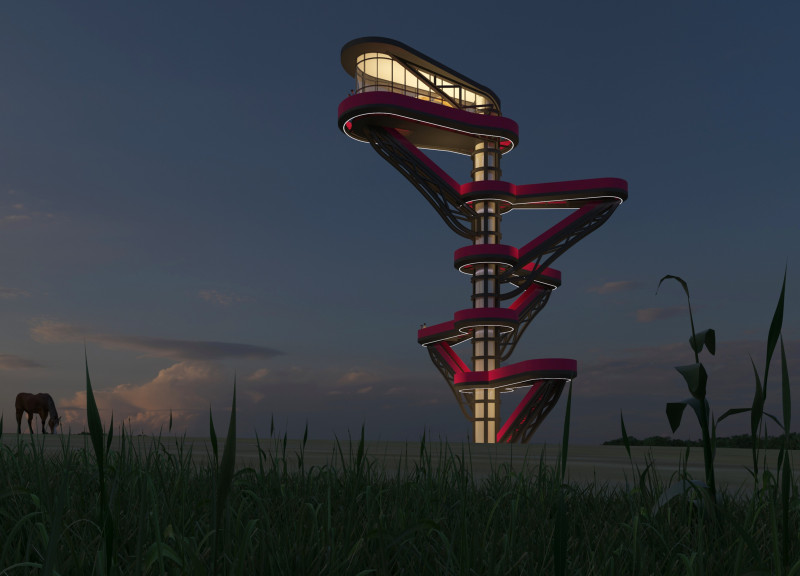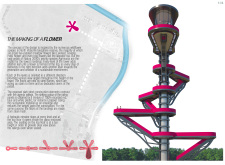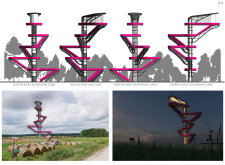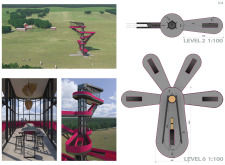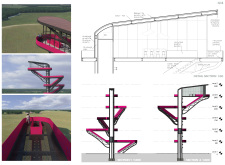5 key facts about this project
The design draws inspiration from the various wildflower species found in the North Vidzeme biosphere reserve. Set in a rich ecological landscape, the tower embodies the qualities of a flower. It reflects small five-petaled meadow flowers like Liverleaf, Cowslip, and Herb Robert, along with bog flowers like Labrador tea. Central to the design is Agrimonia, a species that influences the tower's tiered structure, representing a step toward sustainability.
Structure and Form
The tower uses a tiered design where each level adds to the overall floral theme. Each tier is oriented differently, creating an engaging visual journey as people move upward. This arrangement shows how the levels are interconnected, mimicking the process of a flower blossoming. A framework of dark steel supports the structure, functioning as both the building's strength and a visual representation of the flower's stem.
Materiality and Sustainability
Material choices are an important aspect of the overall vision. Recycled plastics form the vibrant railings, available in red, blue, and white, including products like Ecopixel. This selection reduces the weight of the structure while promoting eco-friendly practices. Steel mesh is used for the landing floors, ensuring durability while lightening the overall load—a critical factor in achieving the design's goals.
User Engagement and Experience
Visitors use a hydraulic elevator to access each level, leading to a glass-enclosed area at the top. This space includes bar-height seating, allowing people to enjoy panoramic views while remaining aware of the landscape around them. Attention to user experience ensures that individuals feel connected to both the architecture and the environment as they ascend.
Aesthetic and Symbolic Details
There is a careful balance between solid and empty spaces throughout the design, establishing a connection between the building and its natural surroundings. The contrast of dark structural elements against colorful railings creates a visual interest that enhances the whole design. Each level symbolizes ecological growth and restoration, contributing to a narrative that connects the creation of space with the essence of the natural world.


